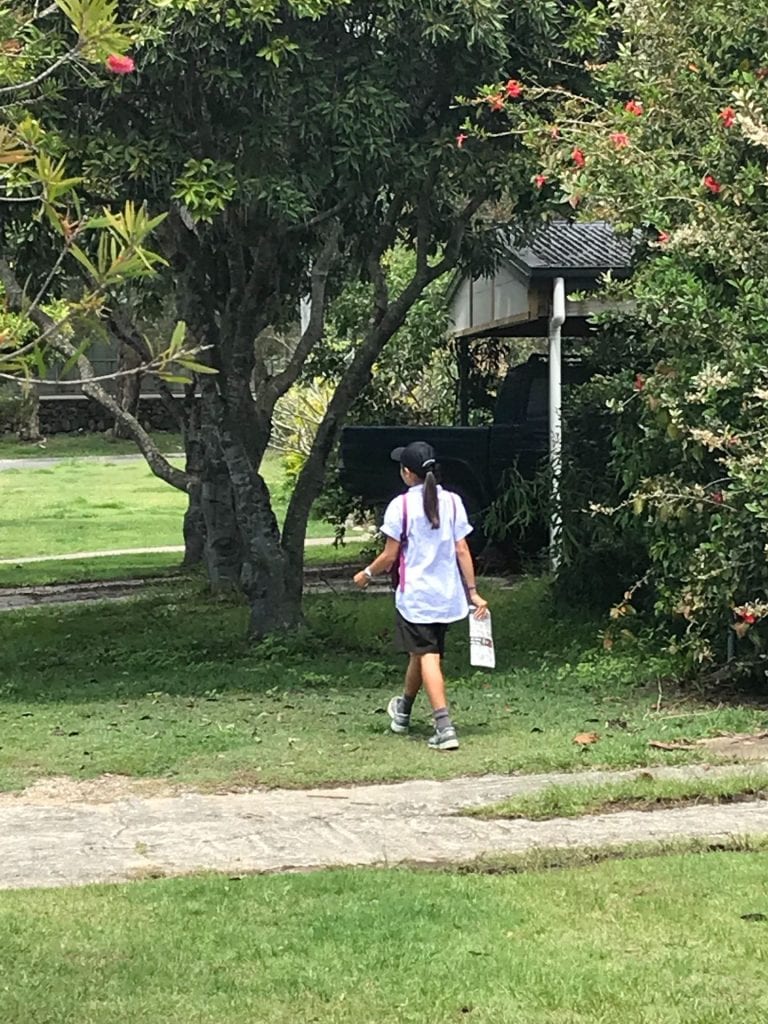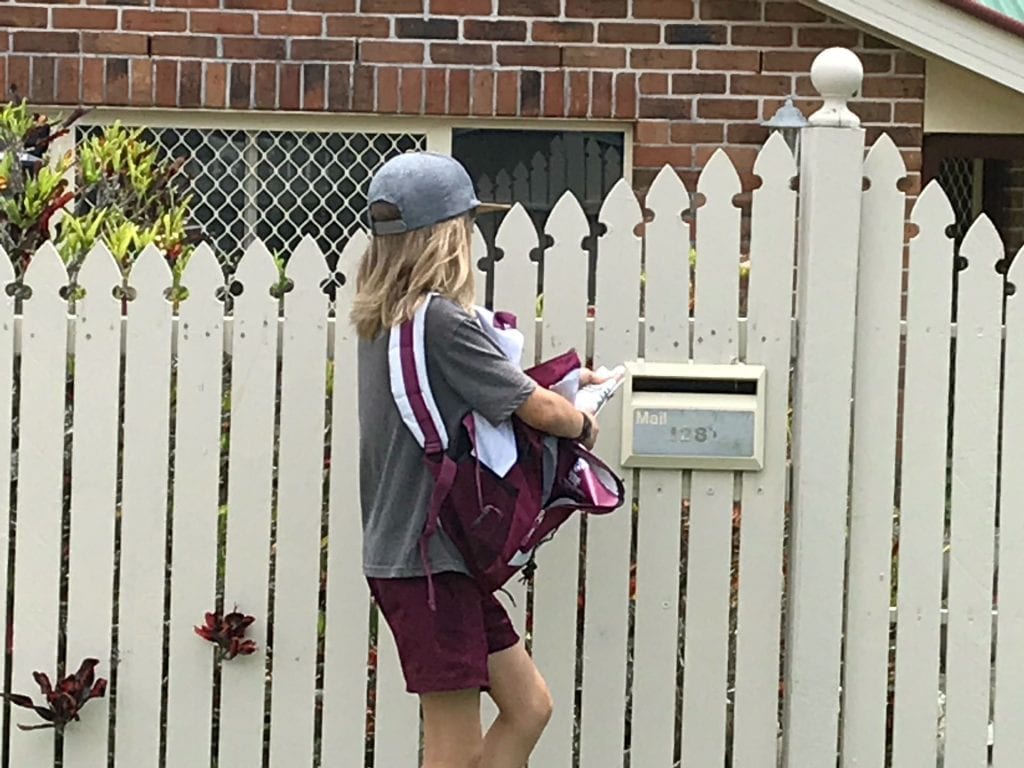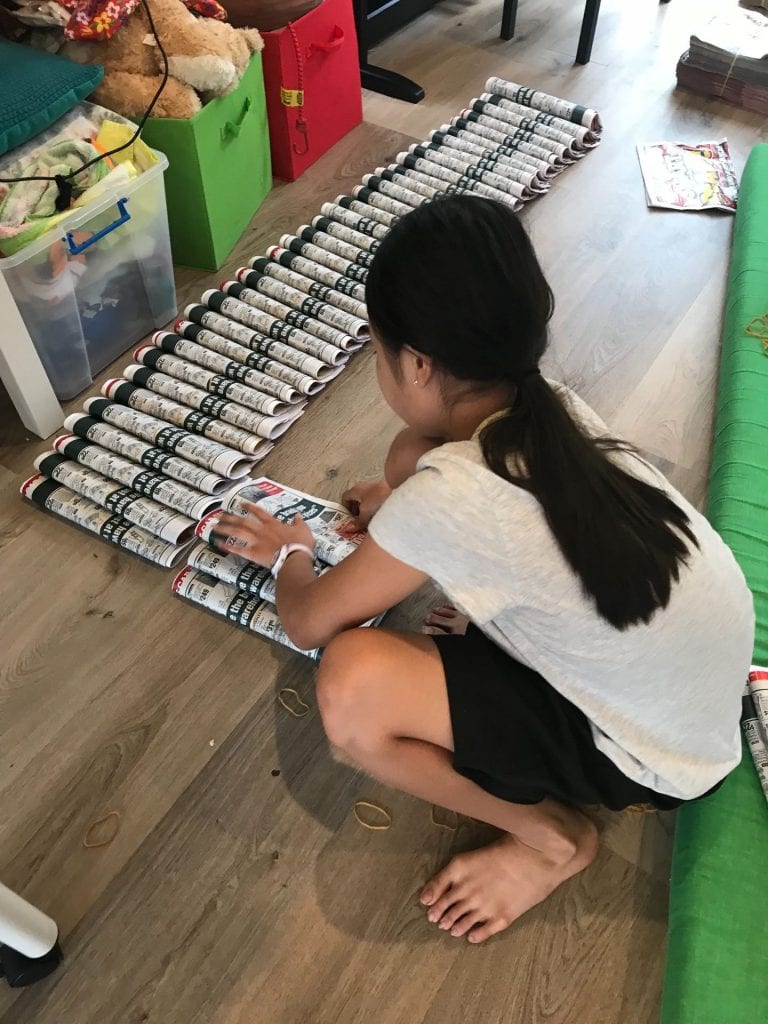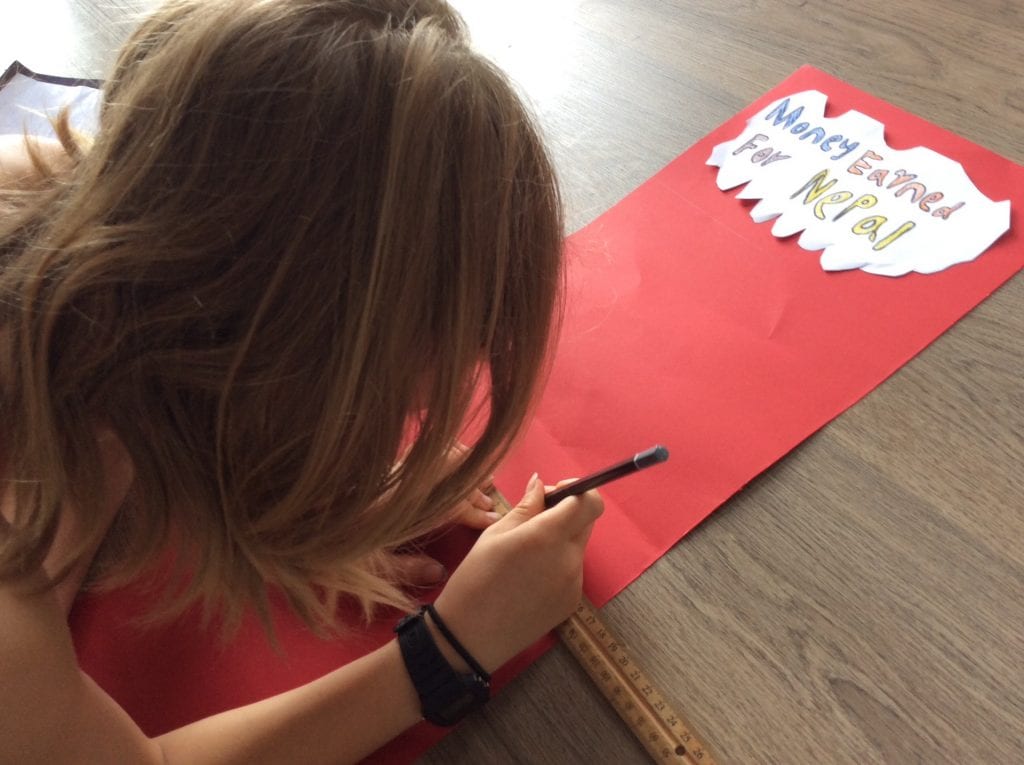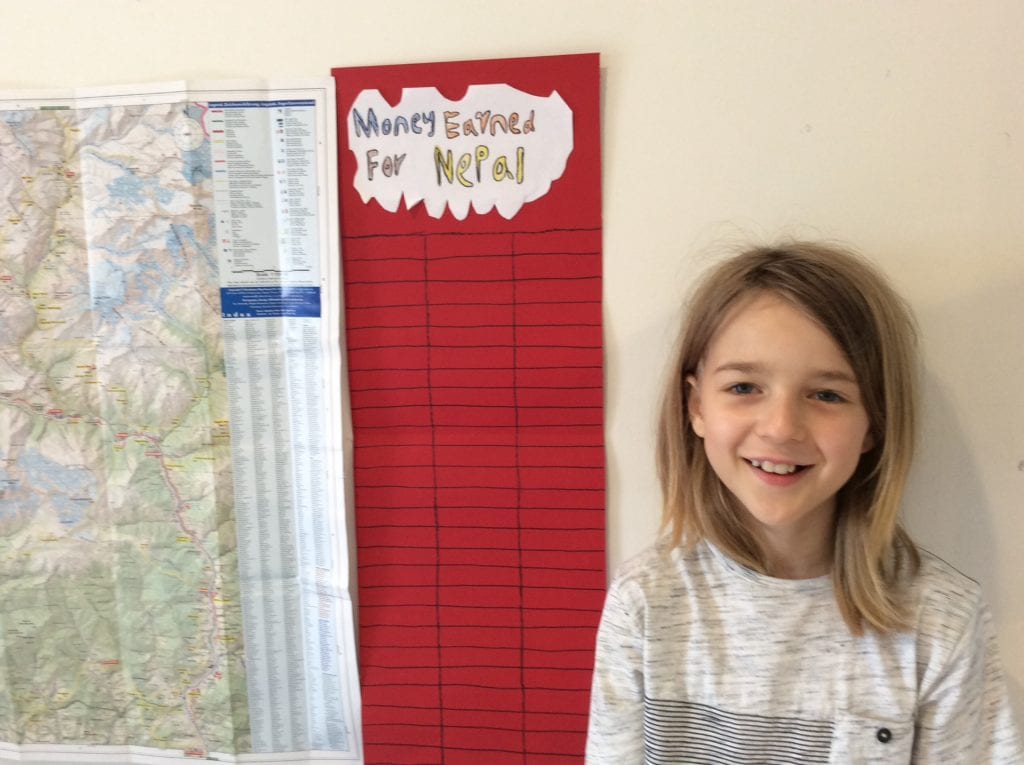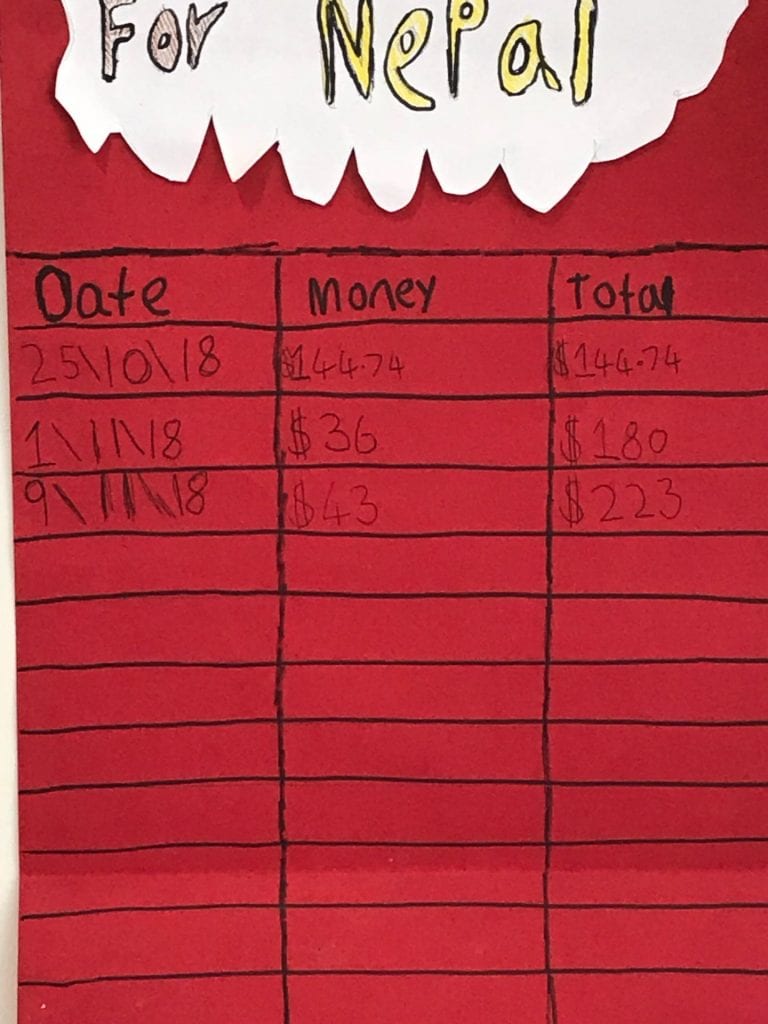We have been slowly building on our family extended hiking gear over the last couple of years, for doing our hikes round Wilson’s Prom, Tiger Leaping Gorge, and Hinchinbrook Island, so we thought we wouldn’t need much more….
We havn’t done an actual pack list yet for Nepal…not got to that stage yet…but while we are doing all our reading and information gathering, we are realising that we are going to need a fair amount of ‘gear’ that we still don’t have, or really have the money for…
I saw on a local group a call out for leaflet and local newspaper droppers needed…so we got thinking…we need to train with packs on, we need extra cash for our gear…and it’s a job we can do safely together, so it seemed a no brainer to give it a go and sign the kids up for their first real job!
Signing up for this job has given the kids a real sense of responsibility, and a sense that they are contributing financially towards our family goal. They are serving the community (we had no idea how many people look forward to their catalogues each week and thank us!). They’ve been able to use the job as a meaningful way to apply their math learning.
Aurora has created a spreadsheet that calculates how much we earn.
The first leaflet pays $20 per 1000. Every leaflet in the delivery after that pays $10.90 per 1000. Aurora had to think of how to work out how much we would get paid depending on the amount of leaflets and number of houses in the area we were delivering. Then create a formula in a spreadsheet, so that we could easily enter the number of leaflets and houses we have each week to calculate our pay, and keep a running total of the weekly earnings.
Lucas created a wall chart for us to have a visual running total of our earnings each week.
We decided that the kids were doing such a good job, that they could both receive 10% of each weeks earnings towards their own personal savings. 10% will also be going to a charity or organization in Nepal that helps kids somehow. So the next task is to make the spreadsheet visually appealing, plus include the deduction of their 10% and our 10% donation, and a separate weekly total of those. Then there’s working out how we can get things like wind and rain proof hiking pants each, cheaply, with the savings we have 🙂 So much Math!
The job has also opened up discussions about doing a job that does not align with personal values. We have a ‘no junk mail’ sticker on our letter box, and we don’t consume much other than food, basic hygiene stuff, books, and hiking gear 🙂 We’ve been a bit anti- consumer catalogues!
We’ve talked about how many people would read/ bin the leaflets, is it a waste of energy on the earth to produce them, what does the companies’ involved market research say? Is it an ethical job? What about all the other jobs involved from producing the leaflets, to marketers? What other jobs contribute to environmental, physical and mental health problems? There were actually lots of regular jobs we could think of!!!
It’s the kids’ first job, we are now part of the process, in order to save up things we need for our goal. We live in a world where we have to work to live. Is it possible to have a job that aligns with all ethical values? Deep topics, but the kids have plenty of thoughts to contribute to them!
Australian Curriculum Outcomes
Yr 7 HASS Economics and Business – Knowledge and Understanding : Investigating the contribution that work can make to an individual ( example, earning an income, contributing to an individual’s self-esteem, contributing to the community, material and non-material living standards and happiness)
From the senior secondary curriculum : calculate weekly or monthly wage from an annual salary, wages from an hourly rate including situations involving overtime and other allowances and earnings based on commission or piecework (ACMGM002)
use a spreadsheet to display examples of the above computations when multiple or repeated computations are required; for example, preparing a wage-sheet displaying the weekly earnings of workers in a fast food store where hours of employment and hourly rates of pay may differ, preparing a budget, or investigating the potential cost of owning and operating a car over a year. (ACMGM009)
Yr 5 Math : Select and apply efficient mental and written strategies and appropriate digital technologies to solve problems involving all four operations with whole numbers
Investigate and calculate percentage discounts of 10%, 25% and 50% on sale items, with and without digital technologies
